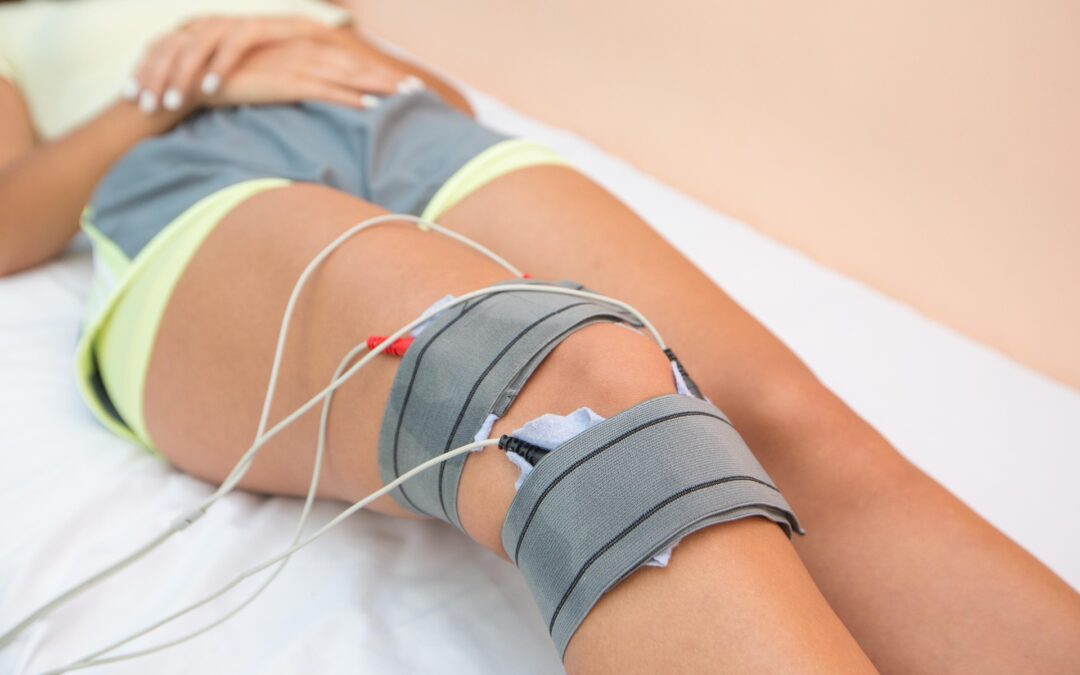Iontophoresis is a treatment technique used in physical therapy that involves delivering anti-inflammatory medication through the skin using a mild electrical current. The process relies on the principle that like charges repel each other—so when a medication with a specific charge is applied to the skin and an electrical current of the same charge is introduced, the medication is pushed deeper into the tissues. This method is non-invasive, painless for most patients, and highly effective for targeted drug delivery, making it a valuable tool in a physical therapist’s arsenal.
While iontophoresis has been around for decades, advancements in technology have made the equipment more portable and user-friendly. This has expanded its use beyond hospitals and specialized clinics, allowing more physical therapists to integrate it into their practices. It’s commonly used to relieve pain and treat localized conditions such as tendinitis, bursitis, and plantar fasciitis.
Why Physical Therapists Use Iontophoresis
Physical therapists often turn to iontophoresis because it offers a targeted approach to managing pain and inflammation without the need for oral medications or injections. This is particularly useful for patients who cannot tolerate systemic medications due to side effects or underlying health conditions. By delivering medication directly to the affected area, iontophoresis reduces the risk of gastrointestinal issues, liver strain, or other systemic complications that can occur with oral drugs.
Another key advantage is its ability to provide localized relief quickly. For example, conditions like lateral epicondylitis (tennis elbow) or patellar tendinitis can be stubborn and slow to heal. Iontophoresis can help manage inflammation more effectively than traditional methods like ice, rest, or oral anti-inflammatories alone. This means patients often experience quicker pain relief, allowing them to engage more actively in their rehabilitation exercises, which ultimately speeds up recovery.
Additionally, iontophoresis is non-invasive. Unlike corticosteroid injections, which carry risks of infection, tissue damage, and patient discomfort, iontophoresis offers a needle-free alternative. For patients with needle phobia or those hesitant about injections, this can make a significant difference in treatment compliance and satisfaction.
What Physical Therapists Should Know about Iontophoresis
Before incorporating iontophoresis into treatment plans, physical therapists need to understand both its potential and its limitations. First, not all medications are suitable for iontophoresis. The most commonly used drugs are anti-inflammatory agents like dexamethasone, a corticosteroid with a negative charge, which is effective for reducing inflammation. Lidocaine, used for pain relief, is another frequently used medication. It’s important for therapists to be familiar with the charges of different drugs since this determines the polarity of the current needed during treatment.
Patient selection is another critical factor. Iontophoresis works best for localized conditions where the medication doesn’t need to penetrate deeply into large muscle groups. It’s less effective for widespread or systemic issues. Additionally, certain patients may not be suitable candidates. Those with pacemakers, metal implants near the treatment site, or certain skin conditions (like eczema or open wounds) may be at higher risk for adverse reactions. Pregnant patients should also be treated with caution, depending on the medication used and the treatment area.
Therapists also need to monitor for potential side effects, though they are generally mild. Skin irritation or redness at the electrode site is the most common, often due to the current rather than the medication itself. Adjusting the current’s intensity or using barrier pads can help minimize discomfort.
Proper training on equipment use is essential. While iontophoresis devices are relatively straightforward, incorrect settings can reduce treatment effectiveness or increase the risk of skin irritation. Understanding how to adjust current levels, duration, and electrode placement ensures both safety and optimal outcomes.
Why Physical Therapists Should Consider Offering Iontophoresis
Adding iontophoresis to a physical therapy practice can enhance the range of treatment options available, making care more comprehensive and tailored to individual patient needs. For therapists working with athletes or active individuals, the ability to quickly reduce localized inflammation and manage pain without resorting to invasive procedures or systemic medications can be a game-changer. This means faster recovery times, better performance outcomes, and higher patient satisfaction.
Offering iontophoresis can also set a practice apart from competitors. As patients become more informed about their treatment options, they often seek out clinics that provide the latest therapies. Having iontophoresis as part of your service offerings signals that your practice is up-to-date with current treatment modalities, which can attract new patients and retain existing ones.
From a practical standpoint, iontophoresis is cost-effective. The equipment is relatively affordable compared to other physical therapy technologies, and the consumable supplies (like electrodes and medication vials) are relatively inexpensive. Treatments are quick—typically lasting 10 to 20 minutes—allowing therapists to integrate them easily into standard appointment slots without disrupting their workflow.
Moreover, iontophoresis can be billed under specific CPT codes, making it a reimbursable service in many cases. This adds a revenue stream without significantly increasing overhead costs. For clinics looking to expand their therapeutic offerings while maintaining efficiency, this can be a smart investment.
Iontophoresis is a versatile, non-invasive treatment option that complements traditional physical therapy approaches. Its ability to deliver medication directly to targeted areas with minimal side effects makes it an attractive choice for managing conditions like tendinitis, bursitis, and localized pain or inflammation. For physical therapists, understanding how iontophoresis works, knowing when and how to apply it effectively, and recognizing its limitations are key to maximizing its benefits.

